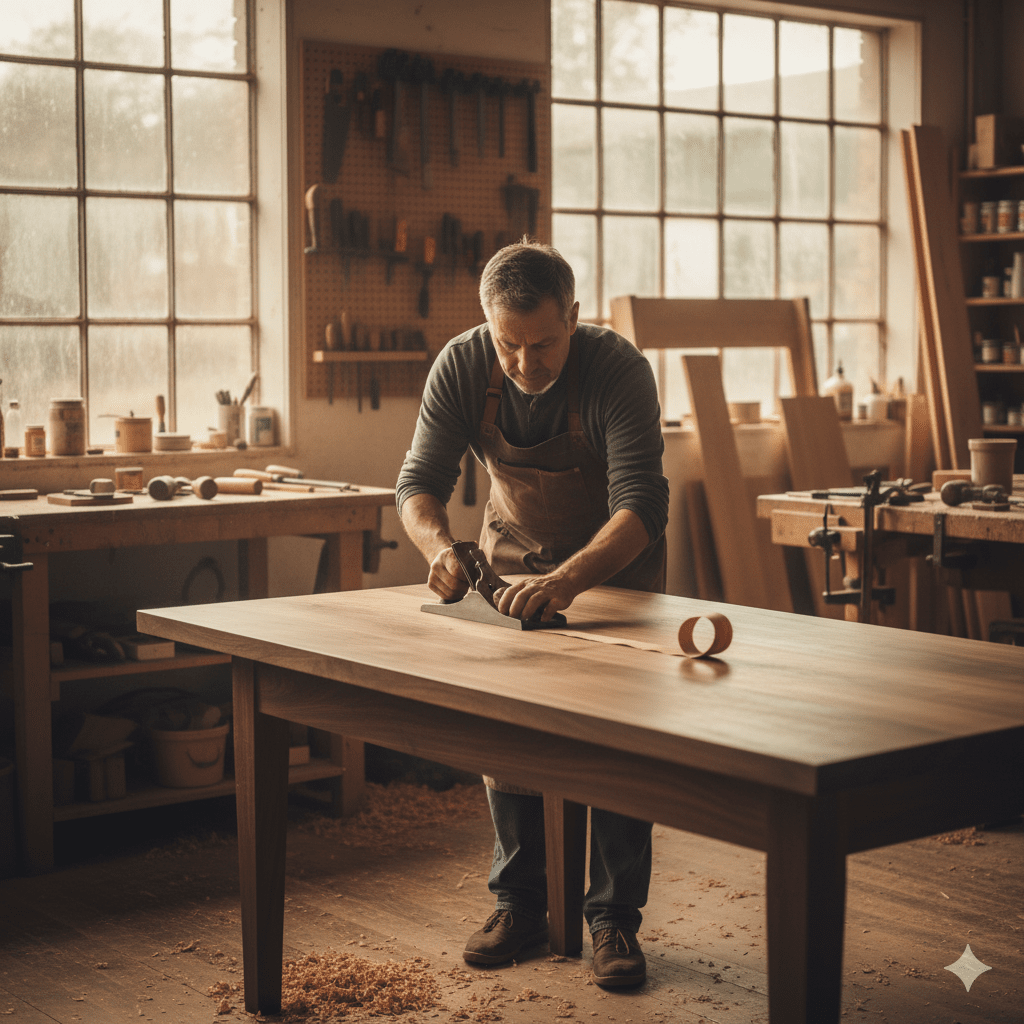In a culture obsessed with fast fashion and instant gratification, the concept of slow furniture feels almost radical. Yet this approach to furnishing our homes – prioritizing quality, craftsmanship, and longevity over quick trends and cheap prices – offers profound benefits for both our wallets and our wellbeing.
Slow furniture begins with a fundamental shift in thinking: viewing furniture as investment rather than expense. A handcrafted solid wood dining table might cost more initially than a flat-pack alternative, but it will likely outlast several cheaper replacements while growing more beautiful with age. The mathematics of quality become clear when calculated over decades rather than seasons.
This philosophy demands patience, which itself becomes a form of mindfulness practice. Instead of furnishing entire rooms in weekend shopping trips, slow furniture encourages thoughtful acquisition over time. You live with spaces partially furnished, learning how you actually use each area before committing to pieces. This patience often leads to better decisions and more cohesive design.
The emotional relationship with slow furniture deepens over time in ways that mass-produced pieces cannot match. Each scratch and mark on your handcrafted wooden coffee table tells a story – dinner parties, children’s homework sessions, quiet morning coffee rituals. These pieces become part of your family history rather than just functional objects.
Craftsmanship appreciation grows naturally from the slow furniture approach. When you invest significantly in a piece, you develop understanding of the skills required to create it. You learn to recognize quality joinery, appreciate hand-finished surfaces, and understand the difference between genuine craftsmanship and mass-produced imitation.
The environmental benefits compound over time. A slow furniture approach typically results in homes furnished with fewer, higher-quality pieces that last decades rather than years. The resource consumption and waste generation drop dramatically compared to the constant replacement cycle of fast furniture.
Perhaps most importantly, slow furniture creates homes that feel deeply personal and authentic. Each piece is chosen deliberately, lived with intentionally, and valued genuinely. The result is spaces that reflect genuine taste and values rather than current trends or convenience shopping.
